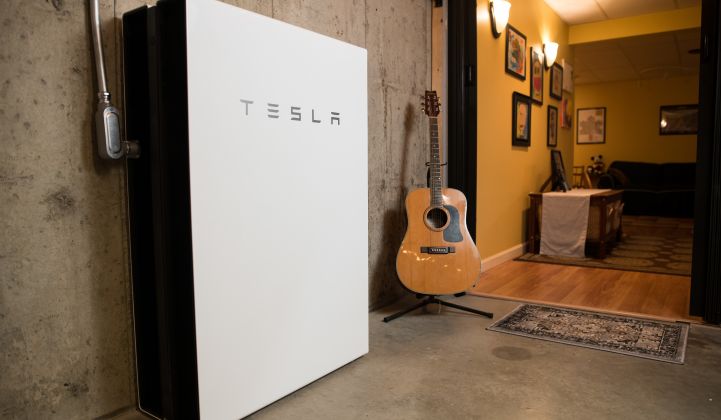Home batteries proved their resilience value during Vermont's Halloween blackout.
A major rain and wind storm struck the state at the close of October, knocking out power to some 115,000 customers. Among those affected, 1,100 homes managed to keep the lights on thanks to pilot programs specifically designed to promote resilient backup power with energy storage. The battery backup service lasted nine hours on average, but the longest instance stretched to 82 hours.
The event offers a timely data point for other jurisdictions mulling the use of home batteries for resilience. Northern California community power purchasers yesterday requested proposals for home batteries to keep customers powered during the region's fire-season safety shutoffs. Such a model remains cutting-edge, but Vermont utility Green Mountain Power has shown it can be done effectively.
A couple of years ago, Green Mountain Power launched a Grid Transformation Pilot that allowed homeowners to pay a monthly fee to host a utility-owned and controlled Tesla Powerwall battery. The residents could use it for backup in an outage, and the utility could dispatch the capacity to manage peak demand at other times.
The program previously generated more headlines by saving hundreds of thousands of dollars during annual system peak events than for fulfilling the backup function. In 2018, GMP's network of batteries reduced consumption during the ISO New England peak hour, saving about $600,000 on capacity fees. This year, a larger number of batteries, totaling 10 megawatts of capacity, responded to a late July peak, saving nearly $900,000 from a single hour of operation.
"We think about our need to deliver reliability constantly," said Josh Castonguay, the utility's chief innovation officer. "This has provided us with an amazing tool that can deliver reliability and also pay for itself."
Those successes made for favorable economics for the utility system as a whole. But the Powerwalls hadn't had a major opportunity to chance to demonstrate the backup benefit that was promised.
That changed on Halloween.
"We had near-100 mph gusts on top of some of the ridge lines," Castonguay said. "We had damage across the entire state."
The 1,100 homes that islanded from the grid accounted for the largest home-battery backup event in the utility's territory so far, he added.
One reason for that: The utility keeps adding more batteries.
The original program wrapped up this summer with a total of 2,000 Powerwalls installed. Another 500 batteries have reached customers through a Resilient Home Pilot, which tests the effectiveness of batteries as an advanced metering tool, and a "bring-your-own-device" pilot, which pays customers a cash incentive if they buy their own battery and hook it up to allow utility control. The BYOD program incorporates other energy storage brands as well, such as sonnen and LG Chem.
Going forward, GMP is working toward regulatory approval of a permanent energy storage tariff, which would let customers get whole-home battery backup for around $50 per month, Castonguay said.
As the utility pushes to decarbonize its electricity supply and guard the grid from future extreme weather events in a changing climate, residential storage could take on an even larger role in the strategy.
"I hope we get to a point where [having] storage in a home is no different from a computer in a home," Castonguay said.
With a final storage tariff in place, GMP could expect to install around 10 megawatts of distributed batteries per year, he noted. GMP is also looking at larger batteries to island entire distribution feeders, in order to protect larger swaths of territory from downed wires.




